Home>diy>Building & Construction>How To Put A Mobile Home On A Permanent Foundation
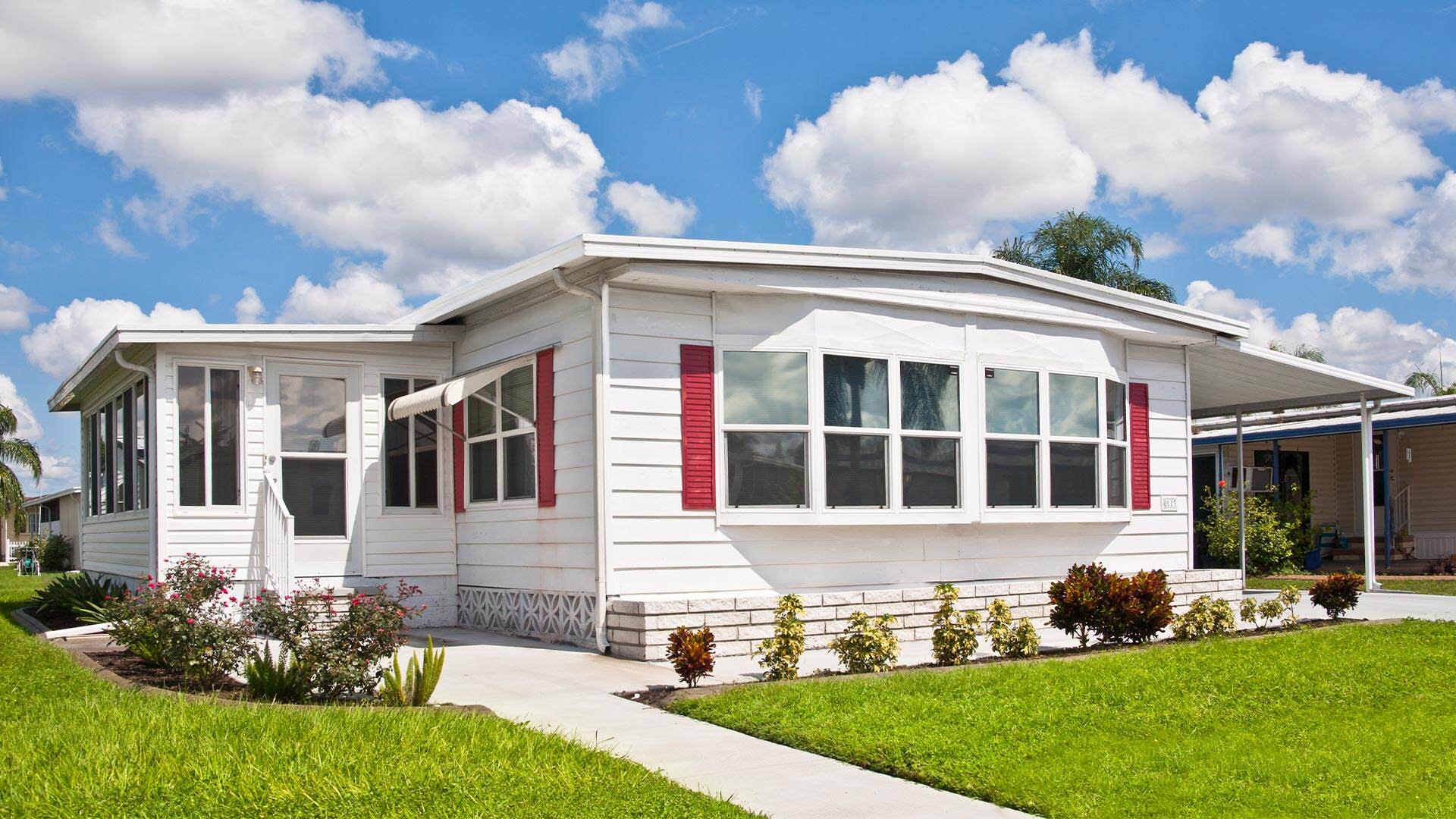

Building & Construction
How To Put A Mobile Home On A Permanent Foundation
Modified: January 31, 2024
Learn how to put a mobile home on a permanent foundation with our step-by-step guide. Expert tips on building construction for a secure and long-lasting foundation.
(Many of the links in this article redirect to a specific reviewed product. Your purchase of these products through affiliate links helps to generate commission for Storables.com, at no extra cost. Learn more)
Introduction
When it comes to mobile homes, a common concern among owners is the stability and durability of their housing structure. While mobile homes are designed to be easily transported and assembled, many owners want to put their home on a permanent foundation to enhance stability and increase the longevity of their investment.
A permanent foundation provides several benefits for mobile homes, including improved structural integrity, increased resistance to natural disasters, and potential financial advantages in terms of property value. In this article, we will guide you through the process of putting a mobile home on a permanent foundation.
Throughout the article, we will discuss the importance of a permanent foundation, how to assess the feasibility of this project, obtaining the necessary permits and approvals, preparing the site for foundation installation, choosing the right foundation type, installing the foundation, anchoring and securing the mobile home, connecting utilities, and inspecting and finalizing the foundation installation.
By following these steps and guidelines, you can ensure that your mobile home is securely and permanently placed on a foundation, providing you with peace of mind and a stronger housing structure.
Key Takeaways:
- Enhance the stability, safety, and longevity of your mobile home by putting it on a permanent foundation. Follow the process outlined in this article to create a secure and welcoming living environment.
- Assess the feasibility, obtain necessary permits, and connect utilities to ensure a successful installation of a permanent foundation for your mobile home. Create a sturdy and functional home with expert guidance and regular maintenance.
Read more: How Much Does A Mobile Home Foundation Cost
Understanding the Importance of a Permanent Foundation
A permanent foundation is a critical element for mobile homes as it provides stability, safety, and longevity to the structure. Unlike traditional homes built on-site, mobile homes are designed to be transportable, which means they are not typically built with a permanent foundation.
However, opting to put your mobile home on a permanent foundation offers several advantages. Firstly, it enhances the structural integrity of your home, ensuring that it remains sturdy and stable, even during adverse weather conditions. A solid foundation helps distribute the weight of the home evenly, preventing sagging and potential structural issues.
Another key benefit of a permanent foundation is increased resistance to natural disasters. Mobile homes on a sturdy foundation are less susceptible to damage from high winds, earthquakes, and floods. This added protection can provide peace of mind, especially for those living in areas prone to severe weather events.
In addition to the safety benefits, a permanent foundation can also have financial advantages. Mobile homes on a permanent foundation tend to have higher property values and are more likely to meet the requirements for mortgage financing. This can make it easier to sell the property in the future or secure a loan against the home if needed.
Furthermore, a permanent foundation ensures that your home complies with building codes and regulations. Local authorities often have specific requirements for mobile homes on permanent foundations, including minimum height and anchoring specifications. By adhering to these regulations, you can avoid penalties and potential legal issues.
Ultimately, a permanent foundation not only provides added stability and safety to your mobile home but also offers long-term financial benefits. By understanding and recognizing the importance of a permanent foundation, you can make an informed decision about putting your mobile home on a solid and secure footing.
Assessing the Feasibility of Putting a Mobile Home on a Permanent Foundation
Before proceeding with the installation of a permanent foundation for your mobile home, it is crucial to assess the feasibility of the project. This involves evaluating various factors that will determine whether putting your mobile home on a permanent foundation is a viable and practical option.
The first consideration is the age and condition of your mobile home. Older homes may not have been designed with a permanent foundation in mind, meaning modifications may be required to accommodate the foundation. Additionally, the overall condition of the home will impact the feasibility of the project. Structural issues or significant damage may need to be addressed before proceeding with the foundation installation.
Next, consider the local regulations and zoning requirements in your area. Research the specific requirements for mobile homes on permanent foundations, as there may be restrictions or guidelines that need to be followed. Contact your local building department or consult with a professional to ensure compliance with all necessary regulations.
Additionally, evaluate the site where your mobile home is currently located. Assess the soil conditions and topography to determine whether it is suitable for a permanent foundation. Unstable or unsuitable soil may require additional support or engineering solutions to ensure a secure foundation installation.
Another important factor to consider is the financial aspect of the project. Assess your budget and determine if the cost of installing a permanent foundation is within your means. Obtain quotes from reputable contractors to get a clear understanding of the financial implications involved in the project.
Furthermore, consider the long-term plans for your mobile home. Assess whether you intend to keep the home in its current location for an extended period or if you may need to relocate in the future. This will help determine if the investment in a permanent foundation is worthwhile.
Lastly, consult with professionals who specialize in mobile home foundations. Engage the services of an experienced contractor or structural engineer to evaluate your home and provide expert advice on the feasibility and best practices for installing a permanent foundation.
By thoroughly assessing the feasibility of putting your mobile home on a permanent foundation, you can make an informed decision and proceed with confidence. Taking the time to evaluate the various factors involved will ensure that the project is practical and beneficial in the long run.
Obtaining the Necessary Permits and Approvals
Before starting any construction work for putting a mobile home on a permanent foundation, it’s essential to obtain the necessary permits and approvals from local authorities. This step ensures that you comply with building codes and regulations and helps ensure a smooth and legal process.
The first step is to contact your local building department or permit office to inquire about the specific permits and approvals required for your project. They will provide you with the necessary information and guide you through the application process. Some common permits and approvals may include:
- Building Permit: This permit is generally required for any construction work, including the installation of a permanent foundation for your mobile home. It ensures that the project meets local building codes and regulations.
- Zoning Approval: Depending on your location, you may need to obtain zoning approval to ensure that your mobile home can be placed on a permanent foundation in the designated area.
- Environmental Permits: If your property is located in an environmentally sensitive area, such as near a waterway or wetland, you may need to obtain additional permits to ensure compliance with environmental regulations.
- Utility Approvals: Contact your local utility companies to obtain approvals for connecting utilities, such as water, electricity, and sewage, to your mobile home.
- Homeowners Association Approval: If you live in a community governed by a homeowners association, you may need to seek their approval before making any modifications to your mobile home.
When applying for permits, you will likely be required to submit various documents, such as site plans, engineering drawings, and specifications for the foundation installation. It is advisable to consult with professionals, such as contractors or structural engineers, to ensure that all necessary documentation is complete and accurate.
Once you have gathered all the required documents, submit your permit application to the appropriate authorities. The review and approval process can take some time, so it’s important to plan accordingly and allow for any potential delays.
It’s crucial to note that proceeding with the foundation installation without the proper permits and approvals can result in legal consequences, including fines and potential demolition of the structure. Therefore, it’s best to follow the necessary steps and obtain all the required permits and approvals before starting any construction work.
By obtaining the necessary permits and approvals, you can ensure that your project is compliant with local regulations and proceed with the installation of a permanent foundation for your mobile home in a legal and hassle-free manner.
Preparing the Site for Foundation Installation
Before you can begin installing a permanent foundation for your mobile home, it’s crucial to properly prepare the site to ensure a smooth and successful installation process. Proper site preparation lays the groundwork for a stable and secure foundation for your home. Here are the steps to follow:
1. Clear the Site: Start by clearing the site of any debris, vegetation, or obstacles that may interfere with the foundation installation. This includes removing rocks, trees, shrubs, and any other obstructions that may be in the way.
2. Level the Ground: Ensure that the site is level and even. Use a surveyor’s level or a laser level to determine the high and low points of the site. If there are significant variations in the ground level, you may need to consider leveling the area using fill dirt or other suitable materials.
3. Excavate the Site: Excavate the area where the foundation will be installed. This involves digging trenches to the appropriate depth and width for the foundation type you have chosen. It’s important to follow the specifications provided by the foundation manufacturer or the guidance of a structural engineer.
4. Install Drainage System: If your site is prone to water accumulation or poor drainage, it’s important to install a proper drainage system. This typically includes adding perforated drainpipes around the foundation to redirect water away from the home and prevent water damage.
5. Compact the Soil: After excavation, it’s essential to compact the soil in the trenches using a plate compactor or a similar tool. Compacting the soil ensures a stable base for the foundation and helps prevent settling or shifting over time.
6. Lay a Moisture Barrier: To protect your foundation from moisture, it’s recommended to lay a moisture barrier over the compacted soil. This barrier, such as a high-quality plastic liner, helps prevent water absorption, which can lead to foundation damage or mold issues.
7. Install Footings: Depending on the foundation type you have chosen, you may need to install footings. Footings provide additional support for the foundation and help distribute the weight of the home evenly. Consult the foundation plans or a structural engineer for the appropriate footing specifications.
8. Backfill and Compact: Once the footings are in place, backfill the trenches with the excavated soil and compact it using a compactor. Gradually add and compact the soil in layers to ensure proper stabilization.
9. Inspect the Site: Before proceeding with the foundation installation, it’s important to inspect the prepared site for any potential issues or discrepancies. Ensure that the site is level, the drainage system is properly installed, and the soil is adequately compacted.
By following these steps to prepare the site for the foundation installation, you can create a solid and stable base for your mobile home. Proper site preparation is essential for ensuring the long-term durability and performance of your home’s foundation.
Choosing the Right Foundation Type for Your Mobile Home
When it comes to putting a mobile home on a permanent foundation, selecting the right foundation type is crucial. The foundation provides structural support and stability to your home, ensuring its longevity and safety. Here are some common types of foundations to consider:
1. Concrete Slab Foundation: A concrete slab foundation is a popular choice for mobile homes. It involves pouring a thick layer of concrete directly on the prepared site. This type of foundation offers excellent stability and durability, and it can be more cost-effective compared to other options. However, it may require additional measures to ensure proper insulation and protection against moisture.
2. Crawl Space Foundation: A crawl space foundation consists of a raised platform with a crawl space underneath. It provides easy access to utilities and allows for ventilation and maintenance. Crawl space foundations are beneficial in areas with high water tables or unstable soil conditions. However, they may require regular inspection and maintenance to prevent moisture-related issues.
3. Pier and Beam Foundation: The pier and beam foundation is a combination of concrete piers or footings that support wooden beams. This type of foundation is beneficial in areas with expansive clay soils or uneven terrain. It provides flexibility in leveling the home and allows for easier access to plumbing and utilities. However, it usually requires more expensive materials and construction expertise.
4. Concrete Block Foundation: A concrete block foundation involves stacking concrete blocks to create a solid foundation. This type of foundation is sturdy and provides good insulation properties. It is commonly used in regions with cold climates. However, it may require professional installation to ensure proper stability and load-bearing capacity.
5. Basement Foundation: A basement foundation is a more extensive and complex option that involves excavating a space underneath the home. It provides additional living or storage space and allows for easier access to utilities. Basement foundations are suitable for areas with ample space and a need for extra square footage. However, they are typically more expensive and require thorough waterproofing measures.
When choosing a foundation type, consider factors such as the local climate, soil conditions, budget, and the specific needs of your mobile home. It’s essential to consult with professionals, such as structural engineers or contractors, who can assess your site and provide expert advice on the most suitable foundation option for your mobile home.
Additionally, familiarize yourself with local building codes and regulations to ensure that your chosen foundation type adheres to the required standards. This will help avoid any complications during the permit and inspection process.
By carefully selecting the right foundation type for your mobile home, you can ensure stability, durability, and long-term performance of your home’s structure. Take the time to evaluate your options and consult with professionals to make an informed decision.
When putting a mobile home on a permanent foundation, make sure to comply with local building codes and regulations. This may include hiring a professional to ensure the foundation is properly installed and inspected.
Installing the Permanent Foundation
Once you have chosen the appropriate foundation type for your mobile home, it’s time to proceed with the installation process. Proper installation is essential to ensure the stability, safety, and longevity of your home. Here are the general steps involved in installing a permanent foundation:
1. Hire a Professional: It is highly recommended to hire a professional contractor or foundation specialist who has experience with mobile home installations. They will have the expertise and knowledge needed to complete the installation correctly and efficiently.
2. Prepare the Materials and Equipment: Ensure that all the necessary materials and equipment are readily available before starting the installation process. This may include concrete, rebar, framing materials, and any other components specific to your chosen foundation type.
3. Follow the Foundation Plans: Refer to the foundation plans and instructions provided by the manufacturer or designed by a structural engineer. Ensure that you follow these plans meticulously to ensure proper installation and adherence to building codes and regulations.
4. Lay the Foundation Footings or Slab: Depending on the foundation type, you will need to lay the footings or pour the concrete slab following the specifications outlined in the plans. This step establishes the base of the foundation and provides structural support.
5. Build the Foundation Walls: If your foundation design includes walls, this is the stage where you will construct them. This may involve using concrete blocks, poured concrete, or other suitable materials outlined in the plans.
6. Install Anchor Points and Supports: Anchor points and supports are essential for securing the mobile home to the foundation. Follow the manufacturer’s recommendations or the advice of a professional to ensure proper installation of these components.
7. Allow for Proper Curing Time: After completing the foundation installation, it’s crucial to allow sufficient time for the concrete or other materials to cure properly. This may take several days or weeks, depending on the specific materials used.
8. Conduct Inspections: Along the installation process, inspections may be required by local building authorities to ensure that the foundation is being installed correctly and meets all relevant codes and regulations. Ensure that you schedule and pass any necessary inspections to ensure compliance.
9. Consult Professionals and Seek Assistance: Throughout the installation process, don’t hesitate to consult with professionals or seek assistance if you encounter any challenges or have questions. Their expertise can help you navigate any complexities and ensure a successful installation.
Remember, the installation of a permanent foundation for your mobile home is a critical step that requires precision and expertise. By following the appropriate plans and working with professionals, you can ensure that your foundation is properly installed, providing long-term stability and support for your mobile home.
Anchoring and Securing the Mobile Home to the Foundation
Once the permanent foundation for your mobile home is installed, the next crucial step is to properly anchor and secure the home to the foundation. Anchoring the mobile home ensures its stability and prevents it from shifting or moving during inclement weather or other external factors. Here are the steps involved in anchoring and securing the mobile home to the foundation:
1. Follow Manufacturer’s Guidelines: Refer to the manufacturer’s guidelines and recommendations for anchoring your specific mobile home model. These guidelines typically provide information on the number and type of anchors required for different sections of the home.
2. Install Ground Anchors: Ground anchors are typically installed around the perimeter of the home to provide stability. These anchors are secured into the ground and attached to the mobile home frame using straps or other appropriate fasteners. Follow the manufacturer’s instructions and use high-quality anchors that meet local building codes.
3. Secure the Home’s Frame: In addition to ground anchors, it’s essential to secure the mobile home’s frame to the foundation to prevent any movement. This may involve installing brackets or braces at strategic points, such as the corners, beams, or other areas specified by the manufacturer’s guidelines.
4. Check and Adjust Tension: Ensure that the anchors and fasteners are properly tensioned. The straps connecting the ground anchors to the mobile home should be tight enough to prevent excessive movement but not so tight that they cause undue stress on the home’s structure. Regularly inspect and adjust the tension as needed.
5. Consider Additional Support: Depending on your location and specific circumstances, you might need additional support to secure the mobile home further. This could include additional ground anchors, support piers, or other structural reinforcements. Consult with professionals or engineers to determine if additional measures are necessary.
6. Regularly Inspect and Maintain: After anchoring and securing the mobile home, it’s crucial to regularly inspect and maintain the anchors and fasteners. Check for any signs of wear, corrosion, or damage, and promptly address any issues. Regular inspection and maintenance help ensure the ongoing stability and security of the home.
7. Consult Professionals: If you are unsure about the proper anchoring and securing techniques or if you encounter any challenges during the process, consult with professionals who specialize in mobile home installations. They can provide valuable advice and assistance to ensure that the home is securely anchored and stabilized.
Anchoring and securing the mobile home to the permanent foundation is a critical step for maintaining its stability and safety. By following the manufacturer’s guidelines, using high-quality materials, and regularly inspecting and maintaining the anchors, you can ensure that your mobile home remains securely attached to the foundation for years to come.
Connecting Utilities to the Mobile Home
Connecting utilities to your mobile home is a crucial step in making it functional and livable. Proper installation and connection of utilities ensure access to essential services such as water, electricity, and sewage. Here are the steps involved in connecting utilities to your mobile home:
1. Water Supply: Start by connecting the water supply to your mobile home. This typically involves running a water line from the main water source to your home. Consult local regulations to determine the appropriate plumbing codes and requirements for your area. Hire a licensed plumber to ensure proper installation and adherence to plumbing standards.
2. Electricity: Engage the services of an electrician to connect your mobile home to the electrical grid. This involves installing a meter box, connecting the main electrical panel, and distributing the wiring throughout your home. The electrician will ensure that the electrical connections meet all safety standards and that the home is properly grounded.
3. Sewage System: If your mobile home is not connected to a municipal sewer system, you will need a septic system or a private sewage disposal system. Hire a licensed contractor who specializes in septic system installation to design and install a system that meets local regulations. Regular maintenance and inspections are essential to ensure the proper functioning of the sewage system.
4. Heating and Cooling: Depending on the climate in your area, you may need to install a heating and cooling system in your mobile home. This can be in the form of a furnace, heat pump, air conditioning unit, or a combination of these. Consult with HVAC professionals to determine the most suitable system for your needs and have it properly installed and connected.
5. Gas or Propane: If your mobile home utilizes gas or propane for heating, cooking, or other purposes, consult with a professional to ensure safe and proper installation and connection. This may involve running gas lines, installing gas meters, and connecting appliances to the gas supply. Adhere to all local codes and regulations related to gas installations.
6. Telecommunications: Determine your communication needs, such as telephone, internet, and cable television. Contact service providers to have the necessary connections and infrastructure installed. They will guide you through the process and ensure proper connectivity to enjoy these services in your mobile home.
7. Regular Inspections and Maintenance: Once all utilities are connected, regularly inspect and maintain the systems to ensure their continued functionality and safety. Monitor water lines for leaks, check electrical systems for any issues, and schedule regular maintenance for your heating, cooling, and sewage systems.
It’s essential to engage licensed and qualified professionals for the installation and connection of utilities to ensure compliance with local codes and regulations. They will have the expertise and knowledge to complete the work safely and efficiently.
By appropriately connecting utilities to your mobile home, you can ensure a comfortable and functional living environment for you and your family. Regular maintenance and inspections are vital to ensure the continued performance and safety of these systems.
Read more: What Insulation To Use Under Mobile Home
Inspecting and Finalizing the Foundation Installation
Once the installation of the permanent foundation for your mobile home is completed, it’s crucial to conduct a thorough inspection to ensure that the foundation meets all requirements and is ready for use. Proper inspection and finalization of the foundation installation are essential to ensure the stability, safety, and longevity of your home. Here are the steps involved:
1. Visual Inspection: Start by visually inspecting the foundation, both from the inside and the outside of the home. Look for any visible cracks, unevenness, or signs of damage. Check the foundation walls, footings, and any support structures for structural integrity and stability. Note any areas that require further attention or repairs.
2. Measurements and Leveling: Use a level to check the levelness and alignment of the foundation. Measure the height of the foundation to ensure that it meets the required specifications. Proper leveling and alignment are crucial for the stability and longevity of the home.
3. Verify Compliance: Ensure that the foundation installation complies with local building codes and regulations. Double-check that all required permits and inspections have been obtained and passed. This ensures that the foundation meets the necessary safety and performance standards.
4. Check Anchor and Support Systems: Inspect the anchor and support systems that secure the mobile home to the foundation. Ensure that they are properly installed, tightened, and provide adequate stability. Test the anchor points to confirm their strength and reliability.
5. Evaluate Drainage: Check the drainage around the foundation to ensure that it directs water away from the home. Ensure that the foundation is properly equipped with gutters, downspouts, and a suitable drainage system to prevent water damage and moisture-related issues.
6. Engage Professional Inspectors: Hire professional inspectors or structural engineers to conduct a detailed inspection of the foundation. They will have the expertise and knowledge to identify any potential issues or areas requiring attention. Their objective evaluation will provide you with peace of mind and validate the quality of the installation.
7. Complete any Final Touches: Based on the inspection results, address any necessary repairs or touch-ups identified during the inspection process. This may include filling cracks, reinforcing weak areas, or making adjustments to the support systems. Ensure that any necessary permits or approvals are obtained for additional work.
8. Maintain Documentation: Keep records of all inspections, permits, and warranties related to the foundation installation. This documentation will be valuable for future reference and potential resale of your mobile home.
By thoroughly inspecting and finalizing the foundation installation, you can ensure that your mobile home is securely and safely placed on a permanent foundation. This step is critical for the long-term stability, performance, and durability of your home.
Conclusion
Putting a mobile home on a permanent foundation is a significant step towards enhancing the stability, safety, and longevity of your home. By following the process outlined in this article, you can successfully navigate the various stages of foundation installation and connect utilities to create a sturdy and functional living environment.
Understanding the importance of a permanent foundation provides the foundation for making an informed decision about this upgrade. Assessing the feasibility of the project ensures that your mobile home is suitable for a permanent foundation and meets the necessary requirements. Obtaining the necessary permits and approvals ensures compliance with local building codes and regulations.
Preparing the site for foundation installation establishes a solid and level groundwork for your home. Choosing the right foundation type for your mobile home ensures a suitable and durable foundation structure. Installing the foundation requires careful adherence to plans and professional guidance.
Anchoring and securing the mobile home to the foundation provides stability and prevents movement. Connecting utilities delivers essential services such as water, electricity, and sewage, making your home functional and comfortable. Inspecting and finalizing the foundation installation ensures that all requirements are met and identifies any necessary adjustments.
In conclusion, putting a mobile home on a permanent foundation is an investment in the stability, safety, and longevity of your home. By following the steps and guidelines outlined in this article, you can successfully complete the installation process and create a secure and welcoming foundation for your mobile home.
Remember to consult professionals throughout the process for expert guidance and assistance. Regular maintenance and inspections of the foundation and utilities are crucial to ensure ongoing performance and safety. By taking these steps, you can enjoy the benefits of a permanent foundation and create a solid and lasting home for you and your family.
Frequently Asked Questions about How To Put A Mobile Home On A Permanent Foundation
Was this page helpful?
At Storables.com, we guarantee accurate and reliable information. Our content, validated by Expert Board Contributors, is crafted following stringent Editorial Policies. We're committed to providing you with well-researched, expert-backed insights for all your informational needs.

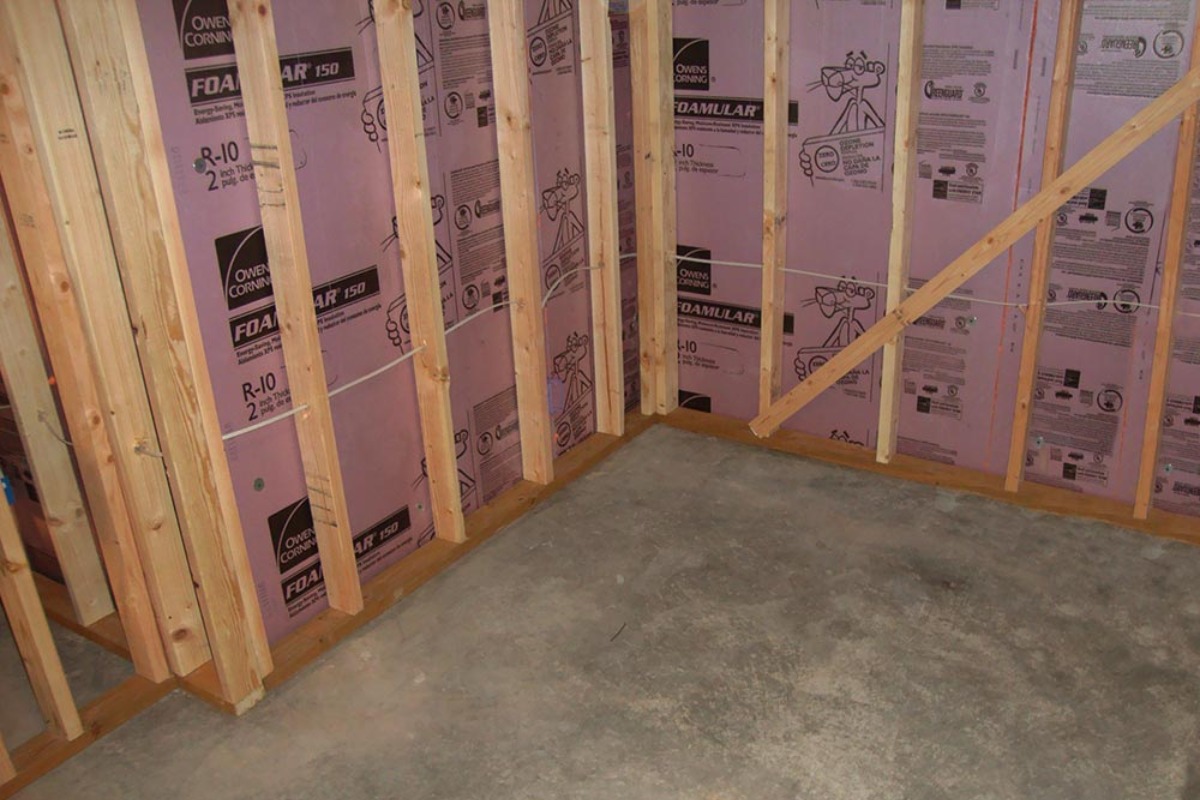
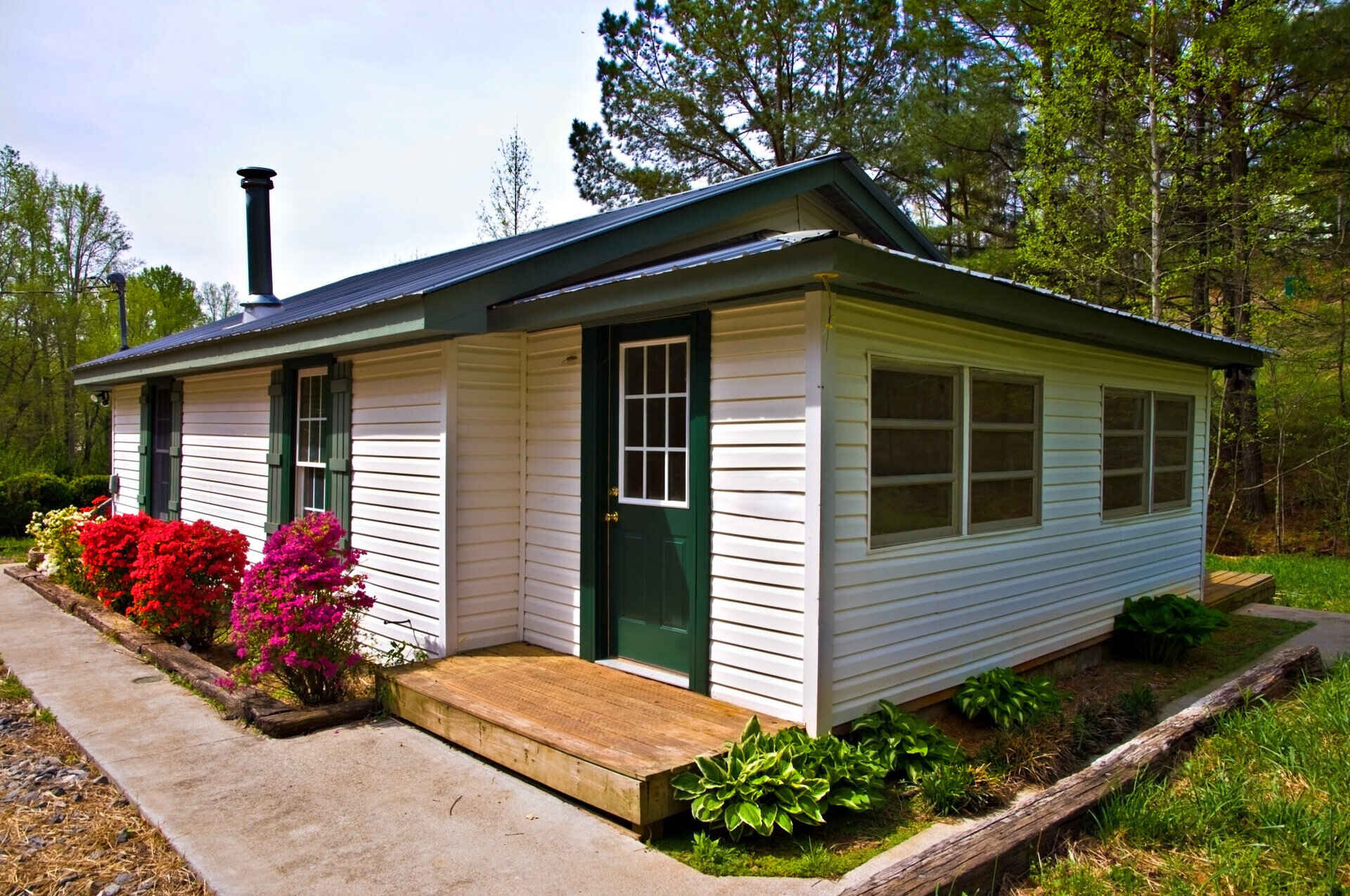


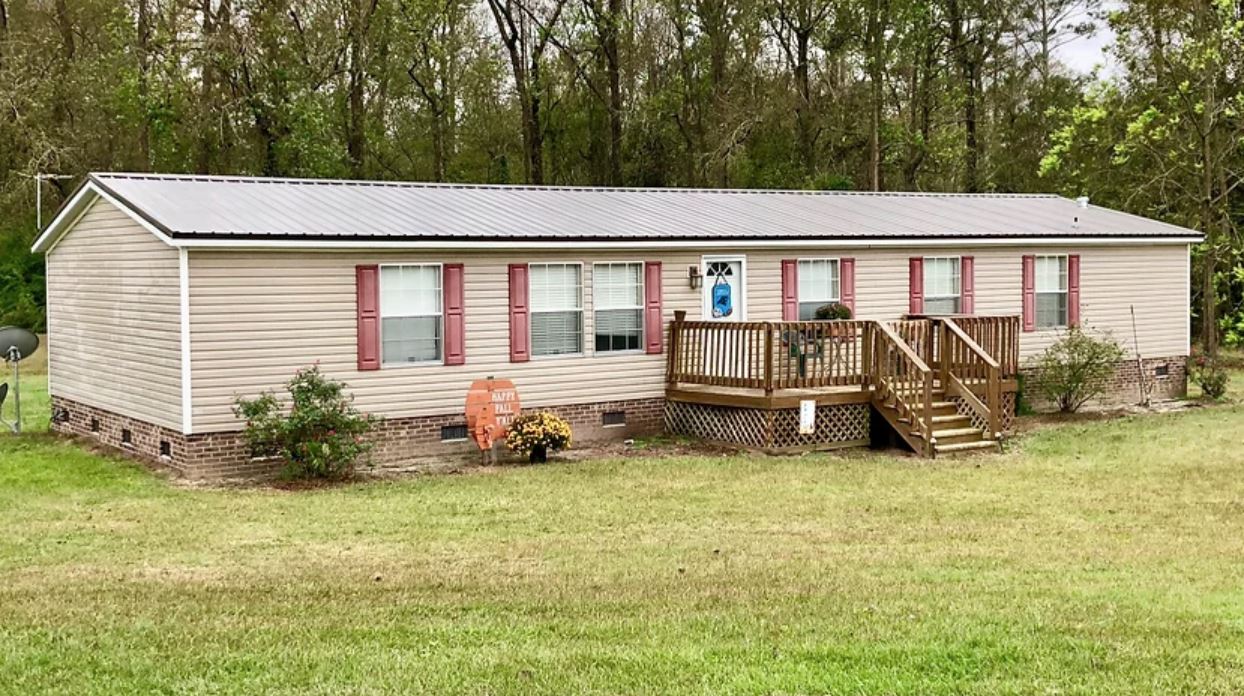
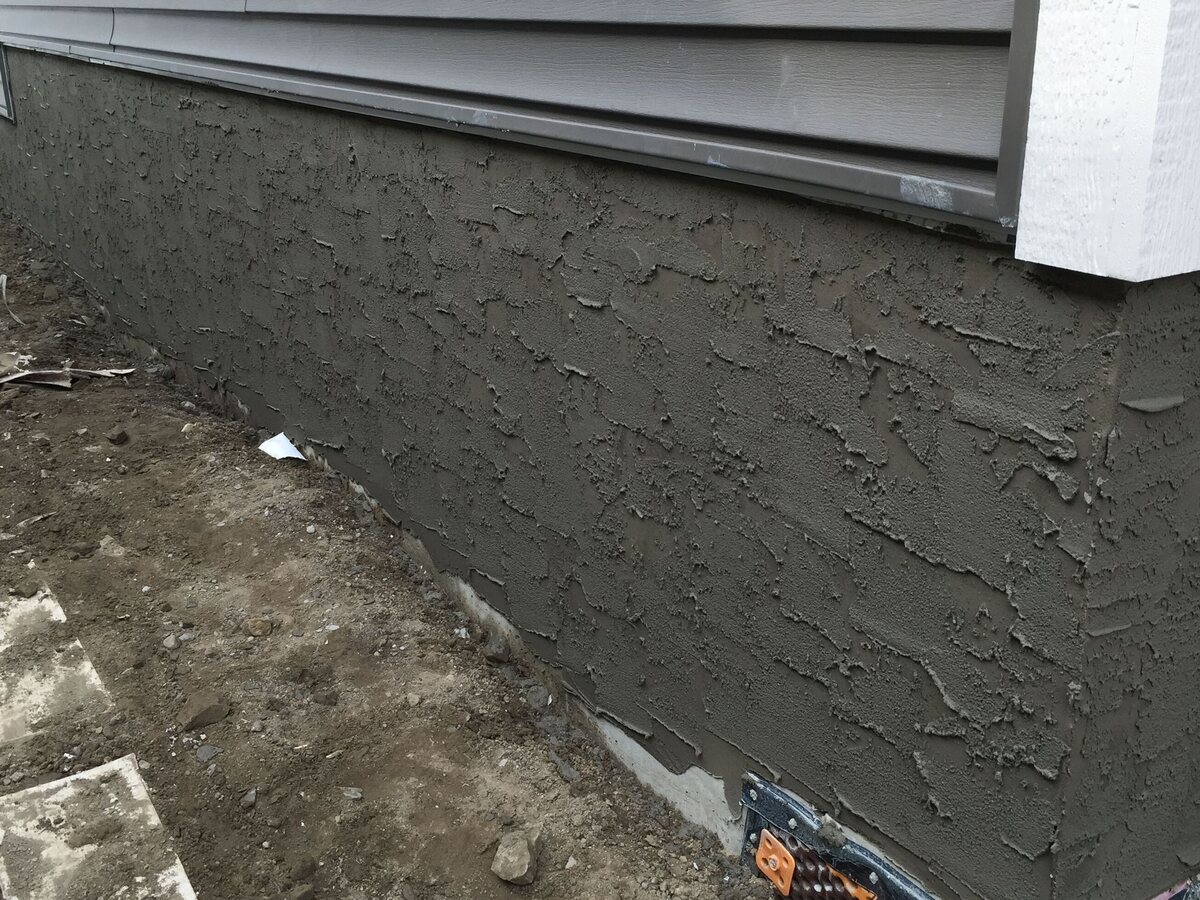
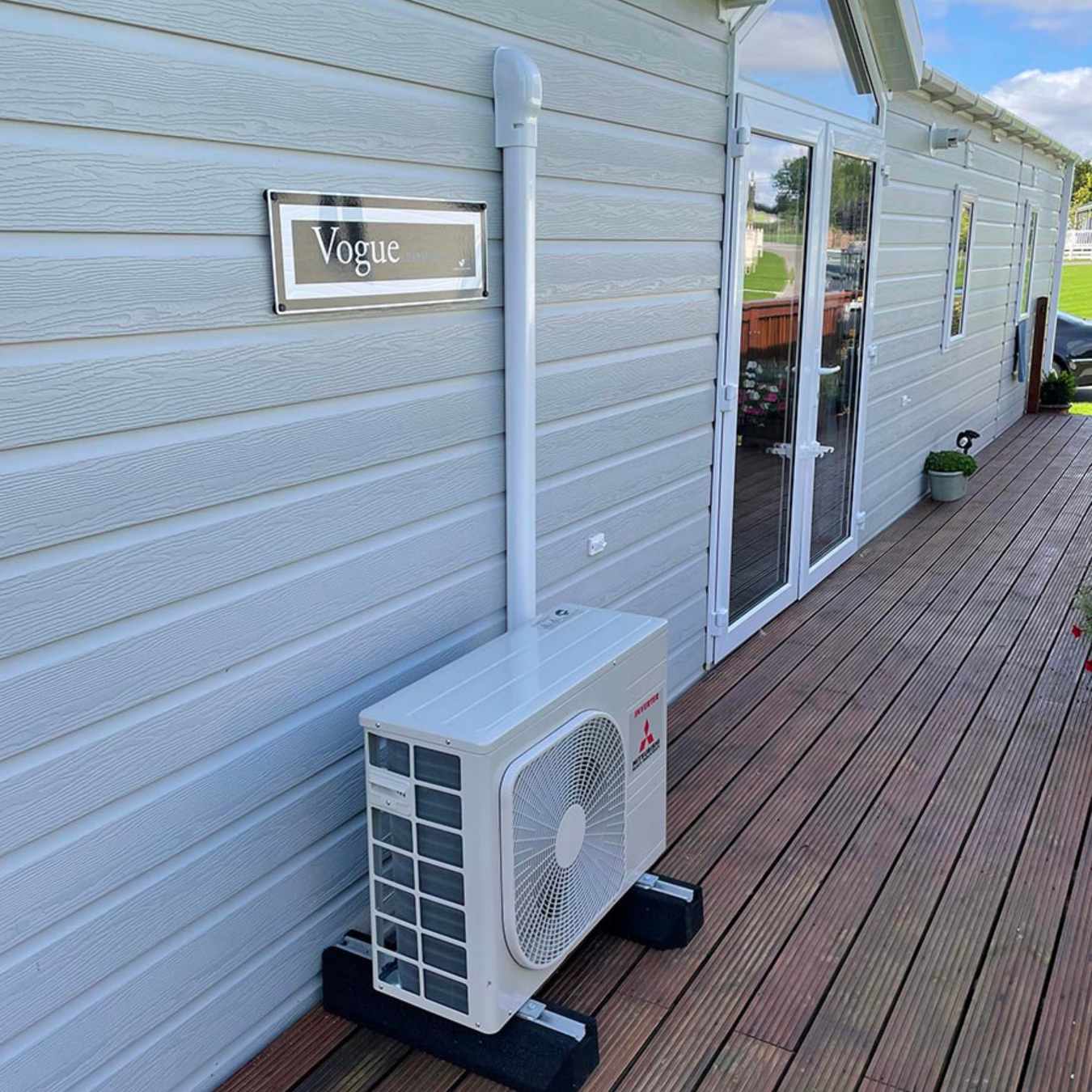






0 thoughts on “How To Put A Mobile Home On A Permanent Foundation”